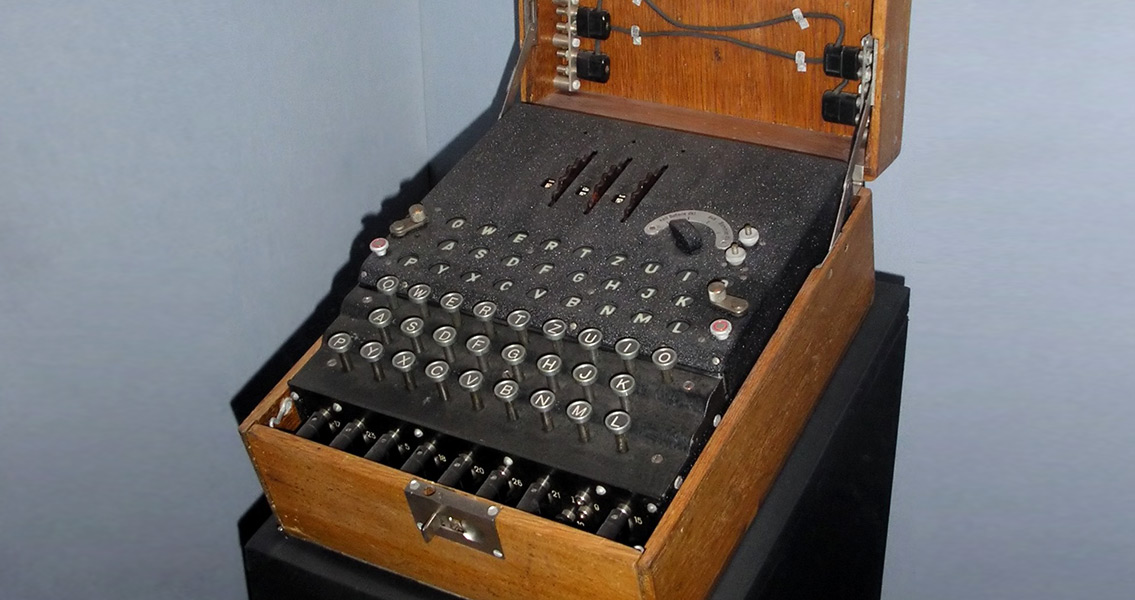<![CDATA[The cryptologists working at Bletchley Park made a key breakthrough on 9th July, 1941, when they cracked the Enigma codes used by the German military to direct ground to air operations on the Eastern Front. Many of the Enigma codes had already been cracked by the Allies prior to July 1941, although these were mainly focused on German operations in Western Europe. The Nazi invasion of the Soviet Union, Operation Barbarossa, made it crucial for communications on the Eastern Front to also be intercepted, to disrupt the Nazi's military campaign there. The Enigma machine was a rotary cipher machine used to send coded messages. Arthur Scherbius, a German engineer, applied for a patent for the Enigma in February 1918, around the same time several other engineers applied for patents for similar rotary cipher machines. Scherbius started a company to manufacture and sell the machines, with the idea that they could have a commercial use, allowing businesses to securely transmit sensitive information. Enigma's potential for military purposes was soon realised, and the German Navy began producing their own version of the machine three years after Scherbius had started manufacturing them, with the army and air force following soon after. Over time the machine became increasingly complex as engineers and codebreakers developed the initial idea, but the basic principle remained the same: the sender would type a message on a typewriter like keyboard and then scramble it using a series of notched wheels and rotors. The recipient, who needed to know the settings the sender had used, could then unscramble the message using their own machine. The team at Bletchley Park, led by Alan Turing and immortalised in several Hollywood movies, played a key role in cracking Enigma's coded messages, but it is important not to overlook the fundamental role played in the early 1930s by several Polish scientists. In 1932 Marian Rejewski, Jerzy Rozycki and Henryk Zygalski, three scientists from the Polish Cipher Bureau, found three ways to crack the coded messages used in the German Enigma machines. Seven years later, on the eve of the Second World War, the Polish scientists handed over their secrets and several replica Enigma machines to British and French intelligence officers operating near Warsaw. Following the outbreak of the war, the German military upgraded their Enigma machines, making the codes much more sophisticated. The team at Bletchley Park therefore had to develop their code breaking techniques significantly to provide accurate and reliable intelligence on the the German military. Nevertheless, the discoveries made by the Polish ciphers in the early 1930s undoubtedly laid pivotal foundations for this work which are often overlooked in popular accounts of Bletchley Park. At the height of the war 12,000 people worked tirelessly at Bletchley Park on cracking the Enigma codes and deciphering German transmissions. The intelligence gathered was used extensively to predict troop movements in Northern France, protect Allied convoys in the Atlantic, and aid Field Marshal Montgomery's campaign against Rommel in the crucial African front of the war. For each Enigma code which was broken, a new field of German communication could be intercepted. With the codes cracked on 9th July 1941, the British military was able to send information to the Soviet Union about planned German offensives in Eastern Europe. They also allowed the Soviet Union to pass information back to London about the murder of Russian prisoners and concentration camp victims. The team at Bletchley Park continued their work throughout the war, deciphering Enigma messages to provide vital intelligence. It is often suggested that their work hastened the end of the Second World War by up to two years. ]]>
Bletchley Park Code Breakers Make Crucial Breakthrough
